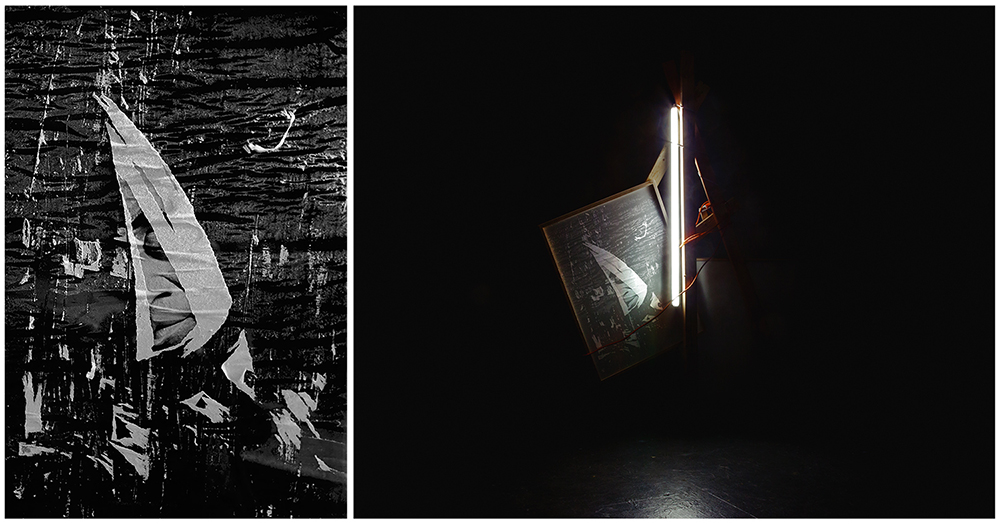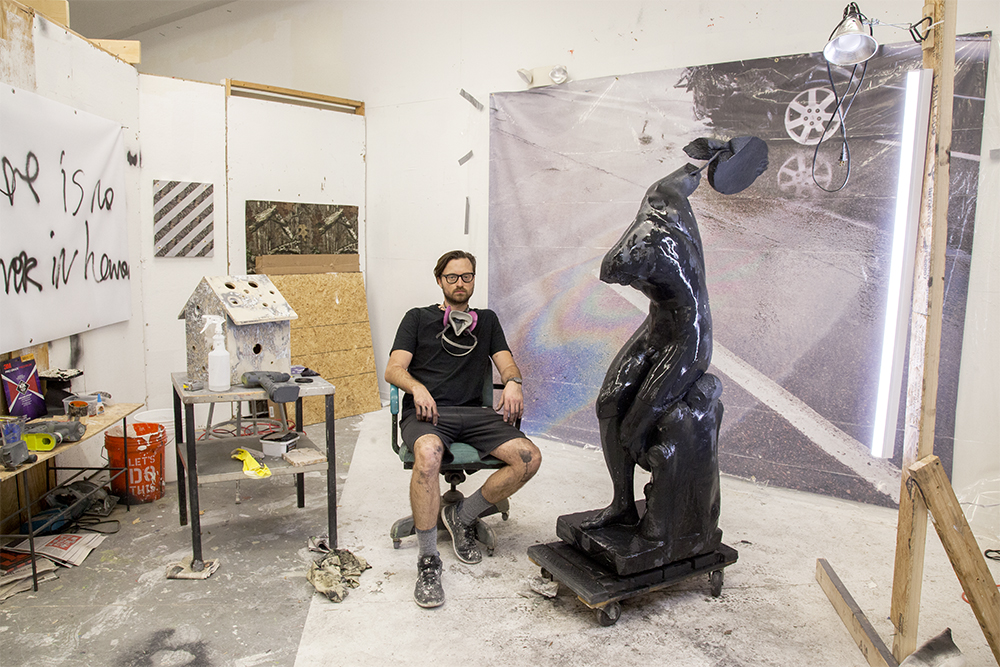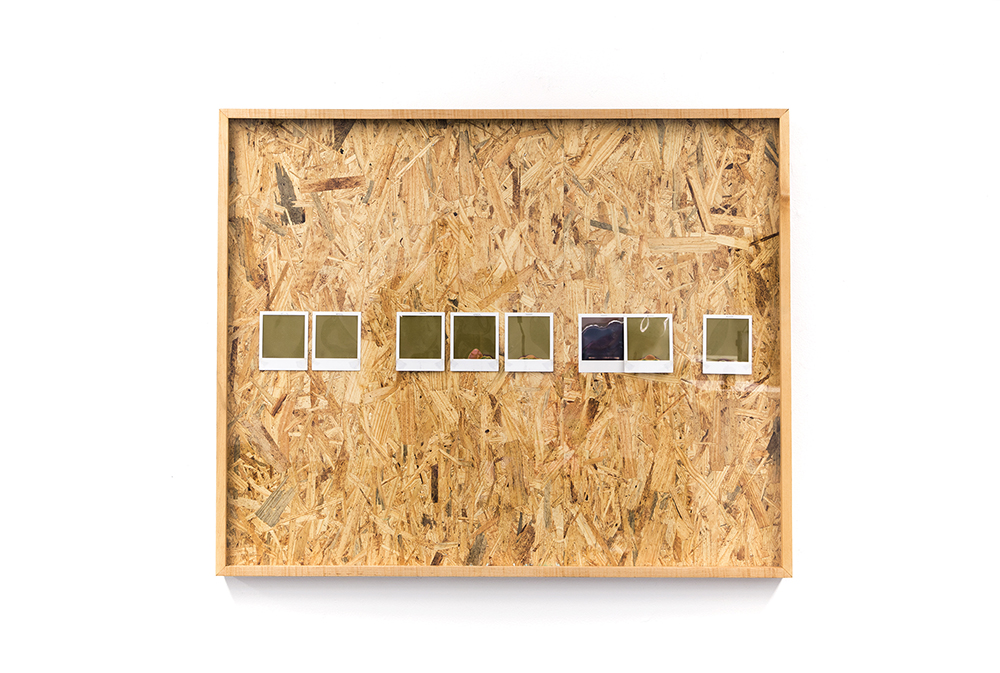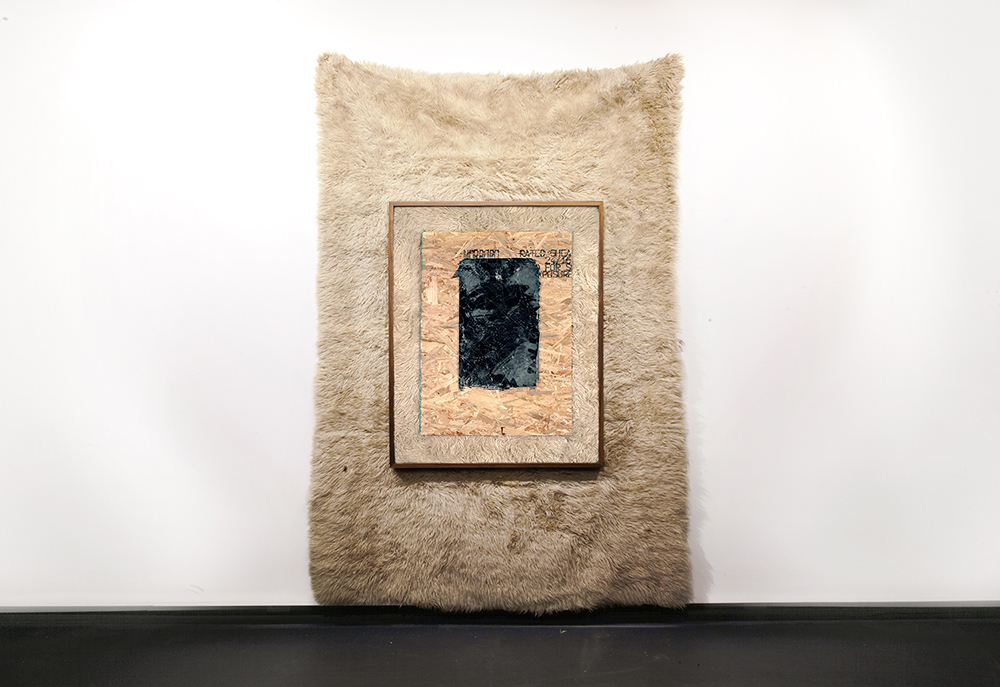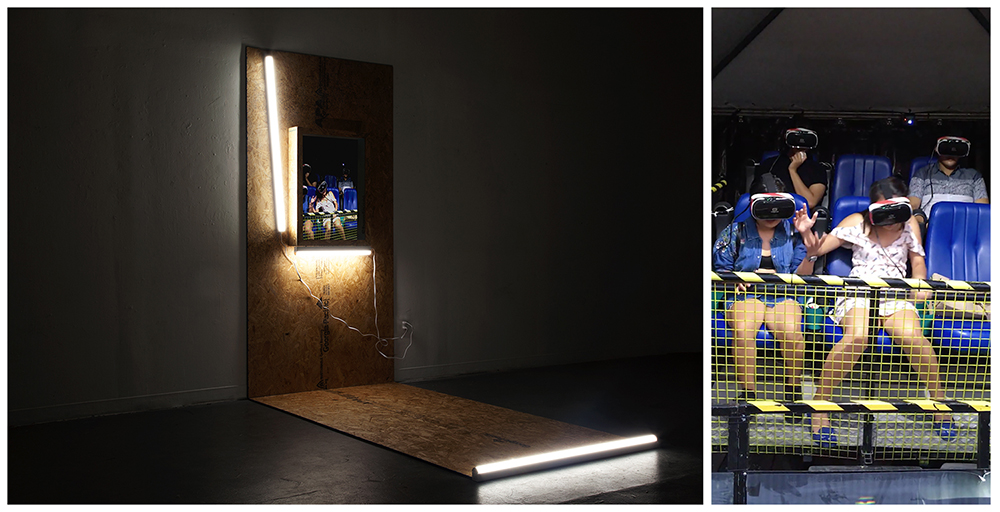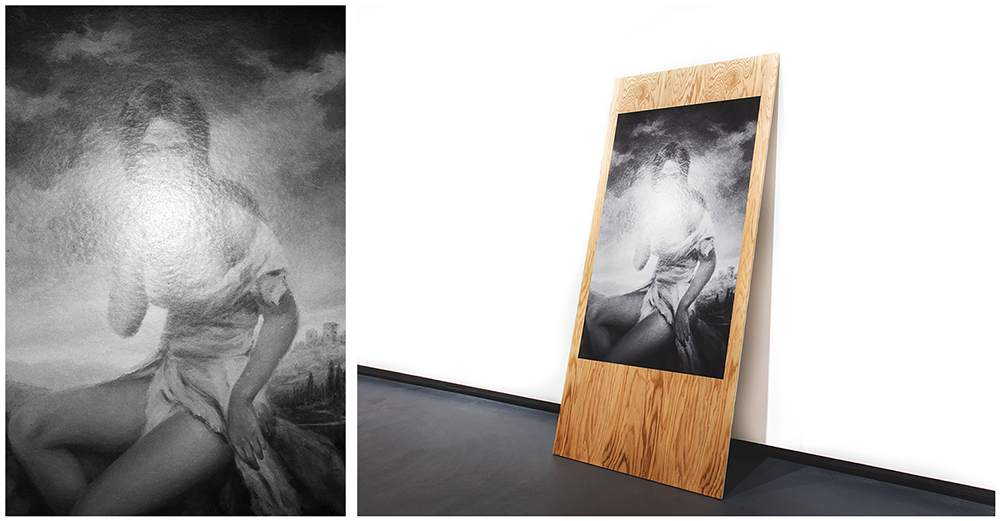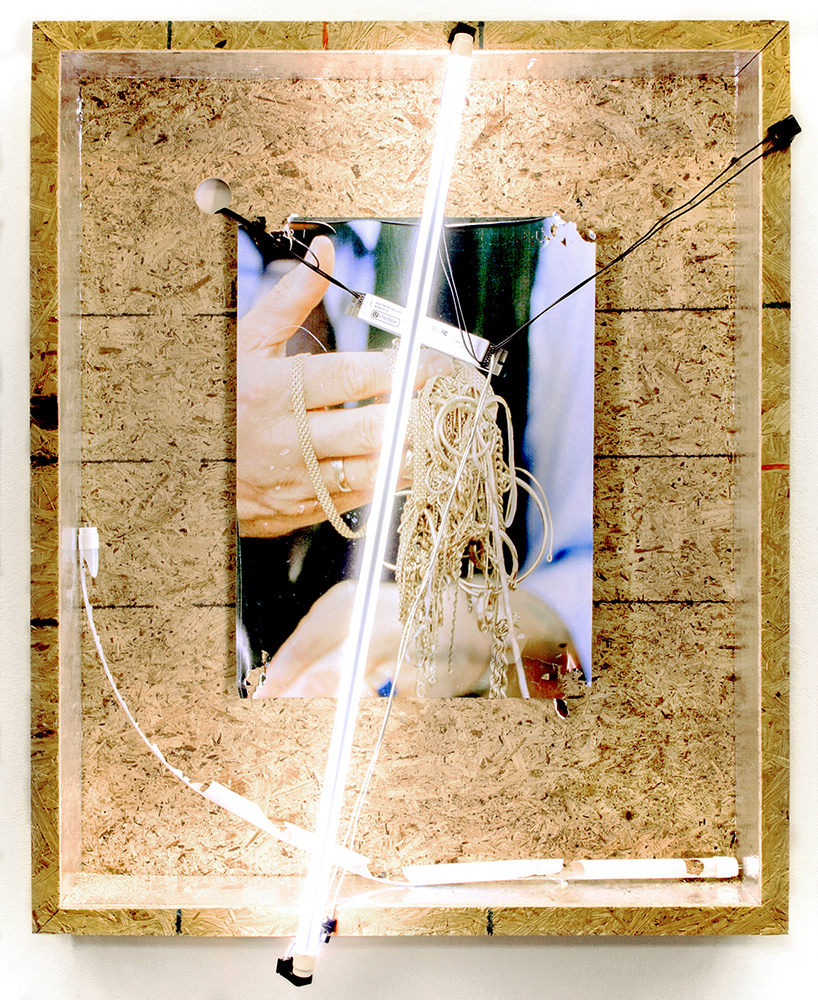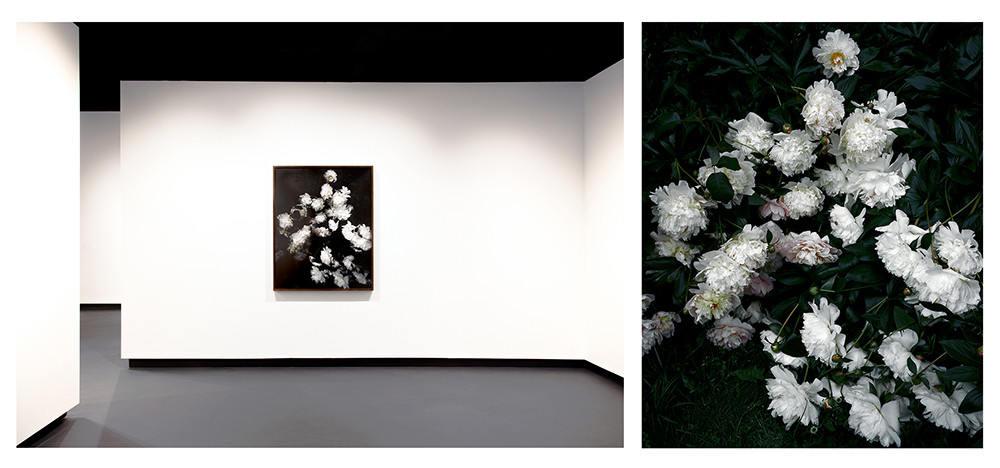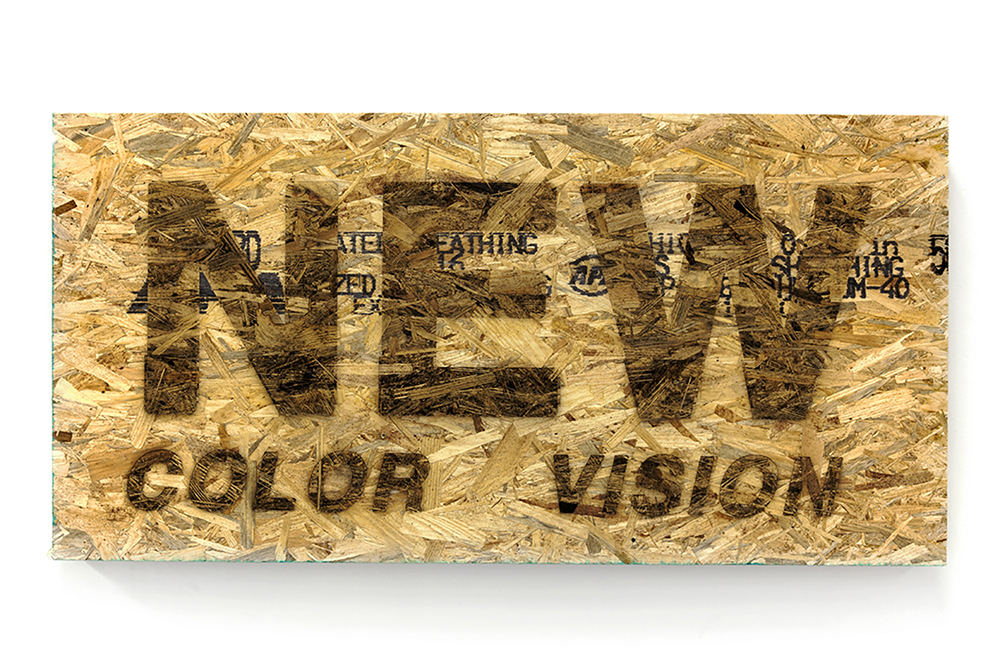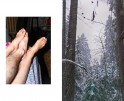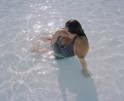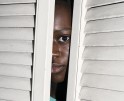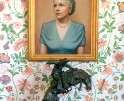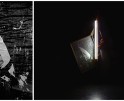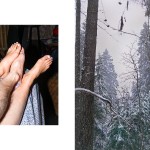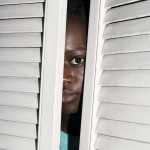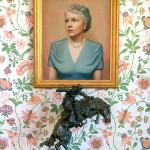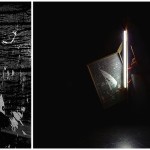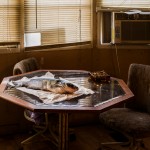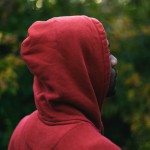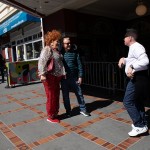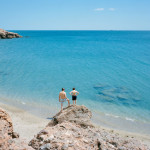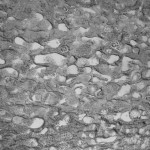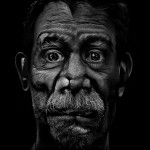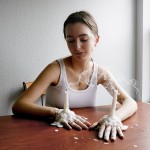William Douglas: 2018 Lenscratch Student Prize Third Place Winner
The Lenscratch team is proud to announce William Douglas, a recent graduate of the University of South Florida’s Masters in Studio Arts program, as the third place recipient of the 2018 Lenscratch Student Prize. In a culture that is increasingly being saturated with imagery, we are extremely impressed with his exploration into photographic representation as a method of communication. While William’s work is not strictly pictorial or limited to a two dimensional plane, we are elated to see a young artist interrogate the relationship between image and propaganda in such great detail. I am pleased to have the opportunity to share some insight into his own process, inspirations and goals as an emerging artist with the Lenscratch community.
Will Douglas studied at VCUarts where he received a BFA in Photography and Film. In 2011 he was a recipient of a VMFA undergraduate fellowship. In 2015 he was included in the ReviewSanta Fe 100 and awarded emerging talent in lenculture’s top 50. Since then has been included in various important exhibitions including Skyway Contemporary at The Tampa Museum of Art and Peripheral Vision at Candela. This year he is featured as one the of the artist in the Annuale X at the light Factory in Charlotte, NC. He is currently a graduate fellow in the MFA program at the University of South Florida and recently was selected to receive a SPE Student Award for Innovations in Imaging.
“So how do I make sense of that never-ending flow, the fog that covers life here and now. How do I see through that, how do I cross that boundary? Do I walk down the street and make pictures of strangers, do I make a drama-tableaux with my friends, do I only photograph my beloved, my family, myself? Or maybe I should just photograph the land, the rocks and trees –they don’t move or complain or push back. The old houses? The new houses? Do I go to a war zone on the other side of the world, or just to the corner store, or not leave my room at all?“- Paul Graham
This question of what to photograph has complicated, driven, and informed my development as an artist. My research in the studio is concentrated on the renewal of photographic language. Through my expanded photographic practice, I use found objects, photography, video, appropriated imagery, and installations to poetically evoke a feeling of mystery in the gallery. I use this multiplicity of approaches to speak about photography and its construction. As I approach the intersection of object making, photograph taking, and spacial arranging, a new type of art is created that vacillates between 2- and 3-dimensional spaces.
By working indirectly, using clusters of signs, object orientation, and image manipulation I am interested in the poetic power of indirect associations as a gateway to address current political and social themes. This method of working is heavily influenced by the graphic nature of the internet. I am interested in how the very nature of spontaneous screen-based collage influences and complicates our reception of often delicate or political content. By allowing the photographic language to speak, not only through the lens but also through the found object I hope to broaden the conversation around the reception of images.
My process outside the studio fuels my work. Traveling allows me to expand my knowledge of the current global experience of the photograph and image consumption. While I look in as an outsider and tourist, I have watched the daily function of a city and its imagery. I have been impressed by how globalized the image has become, reminding me of a quote by Susan
Sontag: “Through the camera people become customers or tourists of reality.” It is reality that I am trying to both experience and disrupt in the gallery. I want people to have an initial belief in my images as documents of “reality,” but through placement, juxtaposition, scale, and objectification, I want the viewer to begin to question that faith in my work as well as its counterparts in the museum.
I hunt for objects and take photographs. I then bring these findings back into the studio and use them to create my work. The separation from my living environment is necessary due to my home being a familiar space. The process becomes part of the artwork. Repeatedly traveling for long periods of time, the lines become blurred. I leave the studio, travel, collect, photograph, return, archive, analyze, fabricate, and print. Then start again and repeat. The trips overlap in the studio. I begin to create a fiction using my findings, but becoming removed from the experiences at this point allows me to create a narrative, which only loosely relates to the documentary potential of photography.
What got you interested in using the medium of photography within in your practice?
Like a lot of students I started by taking a darkroom class in high school. I then went to community college to study painting and drawing. I took one photography class and was hooked. I switched my major and then went on to attend VCU where I majored in Photography in Filmmaking. It has been the primary medium in my work for over ten years.
Do you consider photographic imagery a primary aspect of your work?
The photograph is the starting point for a lot of my pieces even though ironically it is often the last thing added. My work is primarily about the perception of images rooted in art history and contemporary image culture.
How did your collegiate education help or hinder your process?
Attending Community College, VCU, and the University of South Florida has been influential to my process. Grad School changed everything for me. Being in an interdisciplinary studio program made the work I am doing now possible. I still hold onto the roots of my BFA practice and loved my time studying in Richmond. But the size of the program at USF, the one on one attention from the faculty, and the endless resources pushed my practice and the way I make art beyond anything I could imagine. I do think the time I took off between BFA and MFA played a key roll in my work as well. I had a lot of time to see who I was without structure or a constant critique format.
I can identify with your undergraduate and graduate school experience. Many undergrad programs leave little room for exploration, both into the possibilities the medium presents and into student’s own interests. Even though the structures of many programs are antiquated, there are always figures that stand out and provide essential support and inspiration. Were there any specific moments/professors/lectures/critiques that informed where your work is at now?
Studio visits with faculty members were the most beneficial for me. Visiting artist lectures were great because of the wide variety and willingness to engage with us in our studios.
My mentors and individual faculty were the most influential part of my education. Tidewater Community College – Tom Siegmund specifically attributed to me taking the medium of photography as a serious art form. During my BFA at VCU Jon Phillip Sheridan, Shane Rocheleau, Brain Ulrich, Paul Thulin, Tom Condon, Michael Lease, Terry Brown, Amy Ritchie, and Gordon Stettinius changed my outlook on art and also showed me how to be an artist.
The faculty at USF with their unfiltered honesty said things or pushed me in critique inside and out of the studio : Gregory Green, Ezra Johnson, John Byrd, Wendy Babcox, Jason Lazarus, Neil Bender, Sarah Howard, Wally Wilson, Cesar Cornejo, Noelle Mason, Shawn Cheatham, and Sue Havens changed my approach, presentation, and political understanding of what art is and should be.
What about visiting artists? During my time in school visiting artists played a large role in shaping the way make work and think about their own process. Were there any visiting artist that were important to you during your graduate and/or undergraduate experiences?
The visiting artist who were important to me while at USF:
Justin Cooper, Benjamin Bellas, Clifford Owens, Ben Fain, Zach Harris, Amanda Ross-Ho, Park Mcarthur, and Michael Berryhill, Jerry Saltz, and Shaun Leonardo changed one or more things in my practice through conversations, critiques, studio visits or in lectures over the 3 years at USF.
Hopefully, I am not forgetting anyone.
Also, my peers (to long of a list to mention) I wouldn’t be where I am without my classmates and alumni. Especially the USF crew. I love you.
Influential studio comment:
I was told in a studio visit, “I’ve seen that before that looks good” the professor was pointing to a piece in my studio. I smiled back. He said, “ that is not a good thing”. He then went on to tell me to attempt to make work that people haven’t seen, as scary as it may seem, or hopefully develop my own language within visual culture. Which stuck with me. I find the difficulty of creating a personal language in photography to be something I am constantly aware of in the studio.
It sounds like you had some great experiences throughout you’re your collegiate education that have had a tremendous impact on refining your interests and work. Following the timeline of your growth, the medium of photography and advent of highly capable smartphones has drastically changed how we communicate through images. What is your stance on the medium of photography in the iPhone age when 77% of Americans have access to a camera at a moments notice?
I find it to be both exciting and challenging. I can’t help but watch people be overwhelmed by images. In the book Between the Eyes, David Levi Strauss states:
This second industrial revolution is driven, not by the transportation of physical goods or people, but by the transportation of messages. As the resultant all-consuming pandemonium of sound and image sweeps across the globe, the signal-to-noise ratio plummets; it has become more and more difficult for any one voice to be heard above the collective din. The main channels of communication are corporate. The channels that are accessible are increasingly isolated. Anyone who is still interested in freedom must become a student of the new systems of control. Energy is spread so thin over so many channels that there is not enough current left for any one of them to amount to anything extraordinary…
Recently I’ve been considering the vertical frame of the cell phone as an essential place in which we make and consume imagery. We use this device to communicate and receive information continually. This particular object that started as a device that primarily shared sound has now evolved into a place of photographic communication. The sharing of images, which once was complicated and delayed, is now instantaneous and every day, changing the form in which we communicate. The concept of image based communication informs the way I think about presentation and image quality. I use an iPhone for video work and find it to be an interesting and convenient tool to record imagery for pieces where hi-fidelity is not always important.
I see your work as an agitator to photographic formulas set in place, which is really exciting. While most of your pieces stand alone, there are elements or themes that repeat. Plywood, florescent lighting, flowers, rocks and of course the photographic print, which forces me to think about how images have been disseminated and used as a means of propaganda from centuries. Could you talk a little about your choice to use those elements throughout your works?
I find the use of materials and repetitive formal elements to be a conceptual interest that is working from photographic and visual clichés. The use of plywood developed in 2017 when I stuck one of my images on a piece of birch plywood. I was thinking about the ready-made style in relationship to wheat pasting imagery or the way that someone encounters photographs in a bar, on the street, outside a construction site, or in the city. The OSB began to show up when I got back from Europe last summer. I spent a decent time studying image presentation on the street in major cities. I became fascinated with the use of OSB as a barricade to construction sites or as protection for a window.
The OSB then resurfaced during hurricane preparation and aftermath of Irma last fall. So many people used this material to protect their homes and businesses. I was very interested in the way it is made and how it related to the makeup of a photograph. I saw the composite aspect of the wood to have a relationship to the pixelation of an image. So when combined with photographs the conversation was heightened between material and photograph. I use LED lights because of their conceptual connection to photography and video. I am interested in creating experiences that glow, reflect, or confuse your perception through the image and lighting combination. I use the LED to put photographs in the situation in which we experience them outside the gallery. I am interested in bringing the everyday consumption of imagery into the gallery. Dutch still life has been an interest of mine. I use the metaphor of a flower to comment on the representation of wealth and its historical usage for morning or celebration. I am attracted to using rocks for their formal qualities and visual weight. I use the rock as a cue in association with other objects or to comment on political issues such as the US/Mexico border wall. The photographic print plays different roles at different times. I re-photograph imagery and make images of my own. I am very interested in appropriation and how an image is given new life in the sculptures, installations, or collage style works. I spend almost as much time scanning and printing as I do fabricating in the sculptural aspects of the work. I am very interested in building an archive of imagery that I can use whenever needed. I am still excited about making new images every time I pick up a camera. However, now the photograph seems to have a new place in my work.
I enjoy how you build on known means of image making and presentation within your work. By making a photographic print and placing it within a frame, I can sense your excitement to reference past traditions or rules of how photographs live in a gallery environment but also pushing away from that formula by extending the use of space outside of the frame. I see a lot of overlap in the way you use light, color and form, space with artists like Letha Wilson and Anthony McCall. Can you name some artists or exhibitions that had an impact on how you think about space?
Emmanuelle Lainé Where the rubber of our selves meets the road of the wider world at Palais de Tokyo
Rashid johnson Within Our Gates at the Garage Museum of Contemporary Art
Paul Mc Carthy Tokyo Santa/Santas Trees (1996/1999) by Paul McCarthy at MOCA
Mike Kelley (Singles’ Mixer), 2004-2005
William Pope L: Whispering Campaign at Documenta 14, Athens, Greece and Kassel, Germany
Ragnar Kjartansson: Seul celui qui connaît le désir
Clifford Owens: Anthology
Mélanie Matranga at Palais de Tokyo
Alex Da Corte: Free Roses at MASS MOCA
Hélène Delprat I Did It My Way at La Maison Rouge
Pierre Huyghe: After ALife Ahead at Skuptur Projekt Munich
The New Color Vision piece is one of your works that stands as an outlier, complicating the visual language you create. How do you see that piece fitting in the lexicon of the work you are currently making?
The shift towards image-based communication in popular culture makes me reconsider the great power of text when use without an image in an artwork. In New Color Vision, I combine various commercial slogans that create a possible comment on how we might see in the future. I used a font type for this piece that mimics a commercial sign and used a laser engraver to burn the letters into the wood to remove signs of the human hand. I am interested in the laser engravers relationship to photography; light is the tool used to sculpt versus light being captured on film or sensor. I have begun to experiment with different modes and speeds of working with various levels of manipulation. I see this piece as a step in that direction. Text is becoming very important to my practice and it will be showing up in new works.

©William Douglas, You count the objects on the mantelpiece because the sound of numbers is a totally new sound in your, 2017. Archival pigment print, bronze walnuts, OSB, LED, walnut frame.
I know that you will be starting a fantastic residency in Saint Petersburg at the begging of August. For those who have not had an opportunity to be an artist in residence, what are your objectives during that time? Do you want to build off your past work or dive into something wholly new?
The great part about the Saint Petersburg Art Residency (SPAR) is that it culminates in an exhibition. So I will be working towards that for the duration of residency. I am going to make new work but I do have some general themes and plans to execute while I am there. I am hoping this removal (physically) from my comfort zone will spark new works I did not expect prior to attending.
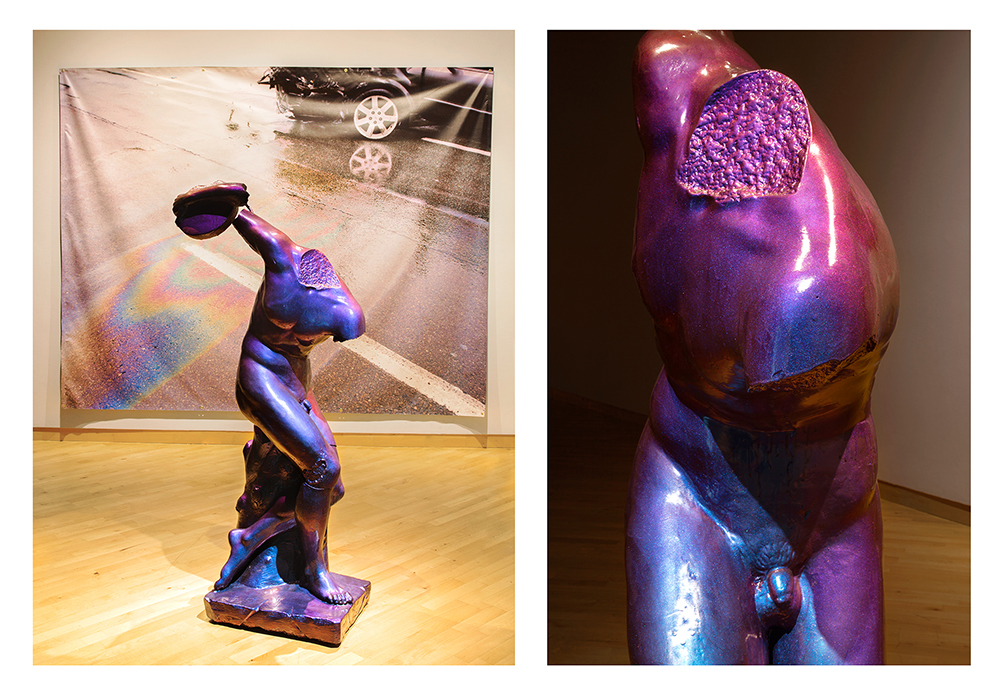
©William Douglas, Too much has been forgotten in the name of memory, 2018. Concrete, bond and car paint.
You have a fantastic momentum building, how will that fire stay lit after leaving a collegiate institution where like-minded individuals surround you?
I am lucky enough to have a great peer group both locally and outside of Tampa. I live with four other artist and entertain regularly. We take art making very seriously and there is a healthy competition and constant critique happening of artwork and ideas. I feel privileged to be in the situation I am in both with the University of South Florida and the Tampa art scene. Staying connected to friends in Europe, New York, or LA even if it’s just through social media and taking time to visit occasionally helps me push in the studio too.
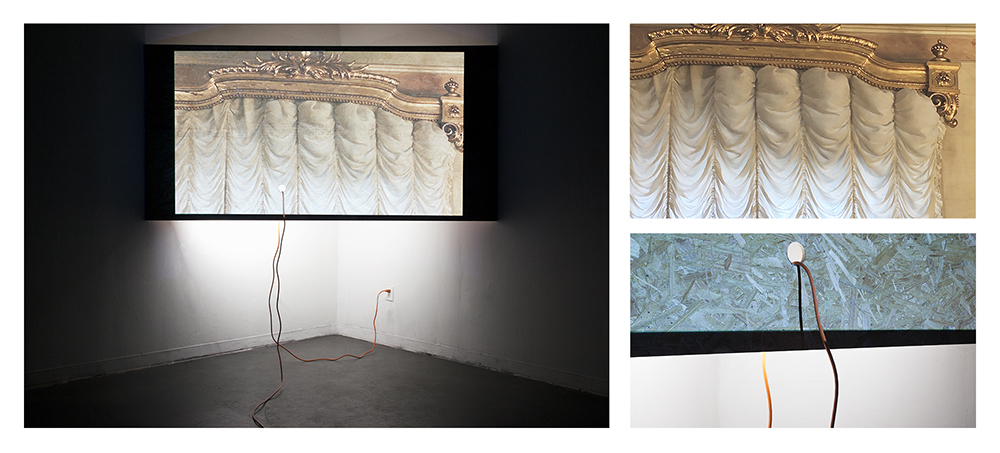
©William Douglas, The Wind and the Space (Hermitage), 2017. Video projection on OSB, and extension cord.
Moving forward with your practice, what are some goals or aspirations for the coming years?
I plan to attend more residencies if they are presented in the right scenarios. I have new pieces to make so working to afford them is a major concentration of mine. I hope to have a at least 1 solo show in the next year which will be a great thing to work towards.
Any last words, shout outs or things you would like to add?
Check out the gallery I co-run with Noelle Mason @parallelogramgallery
parallelogramgallery.com. Also, take a look at these other Tampa galleries:
Tempus Projects
Cunst Haus
Quaid
Coco Hunday
Posts on Lenscratch may not be reproduced without the permission of the Lenscratch staff and the photographer.
Recommended
-
Nick Tarasov: 2018 Lenscratch Student Prize Honorable MentionJuly 15th, 2018
-
Lindley Warren: 2018 Lenscratch Student Prize Honorable MentionJuly 14th, 2018
-
Jasmine Clarke: 2018 Lenscratch Student Prize Honorable MentionJuly 13th, 2018
-
Charlotte Woolf: 2018 Lenscratch Student Prize Honorable MentionJuly 12th, 2018
-
William Douglas: 2018 Lenscratch Student Prize Third Place WinnerJuly 11th, 2018

